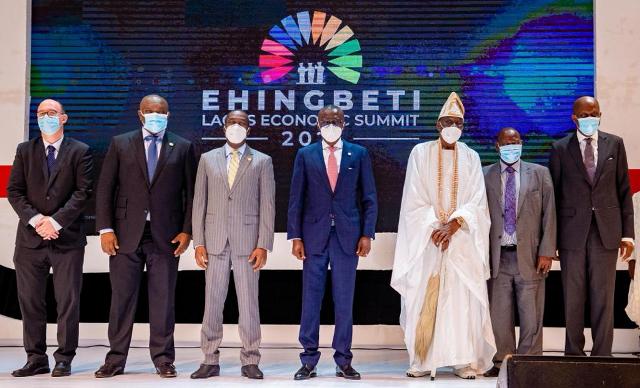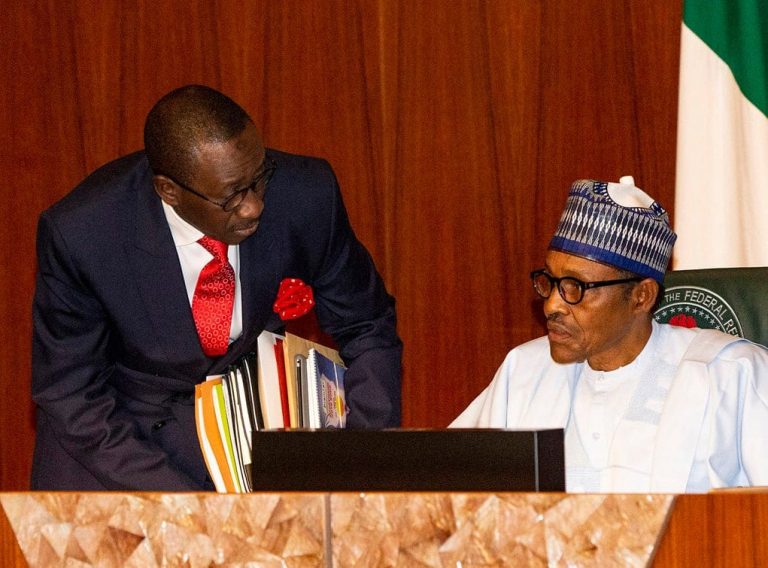
Lagos State governor, Mr Babajide Sanwo-Olu, on Tuesday, rolled out an ambitious plan for the state’s development over the next decade, saying that Lagos, which has the 5th largest economy in Africa, will by 2030, have a running city-wide network of colour-coded Metro Lines that will move over 34.5 million people monthly and cut travel time in the metropolis drastically.
Sanwo-Olu outlined these key infrastructural deliverables being undertaken by the State at the 8th Lagos Economic Summit, otherwise known as Ehingbeti.
The three-day event themed: “Greater Lagos: Setting the Tone for the Next Decade,” was facilitated by the organised private sector in support of the state government.
The summit is largely virtual, but some sessions are to be held physically at the Eko Hotels and Suites, Victoria Island.
Ehingbeti Summit, co-chaired by the chairman of Citi Bank, Mr Yemi Cardoso, is an initiative introduced in 2000 as a biennial event aimed at creating a credible forum to discuss and formulate policies for accelerating infrastructural development and stimulating economic growth for Lagos.
The event was virtually attended by President Muhammadu Buhari, newly appointed Director-General of World Trade Organisation (WTO), Dr Ngozi Okonjo-Iweala, and President of Africa Development Bank (AfDB), Dr Akinwunmi Adesina, and founder of Mo Ibrahim Foundation, Mr Mohammed Ibrahim, among others.
Governor Sanwo-Olu, in his address, disclosed that the race to digitise every community in Lagos had begun with the ongoing laying of 6,000-kilometre fibre optic infrastructure across the city, stressing that the Smart City agenda of the government would fully materialise by 2030 when the entire landscape of Lagos would have been covered by a network of several thousands of kilometres of fibre optic carrying broadband internet into all homes, offices and schools.
According to him, the move is to leverage technology to revolutionise business culture in Lagos by energising Micro, Small and Medium Enterprises (MSMEs) that form the backbone of the state economy, saying it was the reason why well-meaning Nigerians were invited to look ahead at the next decade, and the possibilities that lay ahead for Lagos by 2030.
“I invite every well-meaning Nigerian to join me to look ahead at the next decade, and the possibilities that lie ahead for Lagos. What will Lagos State look like by 2030? There will be a city-wide network of colour-coded Metro Lines, the first two of which- Red and Blue lines- will move over 34.5 million people monthly, cutting travel time by over 250 per cent. In 2030, Lagos will proudly stand beside every other megacity in the world, in terms of its capacity to transport its people efficiently and responsively.
“Water transportation infrastructure being put in place will make waterway transport systems a central element of life in the metropolis. The Fourth Mainland Bridge will come to define the cityscape of the 2020s in the same way the Lekki-Ikoyi Link Bridge defined it a decade earlier. By 2030, Lagos will be a Smart City, fully covered by a network of several thousands of kilometres of fibre optic infrastructure that will carry broadband internet into homes, offices and schools
“The Smart City that is unfolding will also be home to a network of intelligent cameras that will support not only security and policing across the State, but also traffic management and data collection for urban planning. By 2030, Lagos will be home to one of the largest Rice Mills in the world, after we deliver our 32 metric tons per hour rice factory in Imota, which will produce 2.8 million bags of 50kg bags of rice per annum,” the governor said.
He said the implementation of the plan would not only create millions of direct jobs for skilled youths but would also empower women, who owned substantial MSMEs in Lagos.
Sanwo-Olu said plans were underway in Lagos to reverse the tide of billions lost nationally to medical tourism, disclosing that the state government was pushing ahead with a move to develop a Medical Park in Ikoyi in partnership with the private sector, which is expected to offer world-class medical and diagnostic services.
Sanwo-Olu said his administration’s development of blueprint, known as Project THEMES, was designed to build on the achievements of previous administrations and lay foundations for future growth.
The governor, having reviewed the progress recorded within the past decade, said there was so much to be celebrated in the state, but added that so much was needed to be done in expanding the frontiers of growth in Lagos.
President Buhari, in his remark, pledged that the Federal Government would continue to bring massive investments into Lagos in order to boost its economic potential as one of the world’s fastest-growing megacities.
The president said Lagos had demonstrated how understanding between national and subnational governments could be leveraged for accelerated growth, alluding to the concession granted the state government to rebuild the Federal highway leading to Murtala Muhammed International Airport in Ikeja.
“The Federal Government is today completing the Standard Gauge Railway Line that links Lagos to Ibadan in the first instance, and from there connects to Abuja and Kano, and brings ease and efficiency to what is Nigeria’s busiest transportation corridor.
“Just last month, this new Rail Line achieved a milestone extension into the Port Complex in Apapa, setting the stage for a long-overdue decongestion in that area,” the president said.
WTO Director-General, Okonjo-Iweala, made a case for the creation of massive industrial hubs to harness the potential of the youth and women in artificial intelligence and the digital economy.
She commended the Lagos government’s action to build digital infrastructure around the city, noting that the fibre optic programme makes the state a new manufacturing hub of digital products that will shape the global economy in the next decade.
On his part, Dr Adesina believed the increasing youth population in Lagos must not be seen as a problem, but rather as an asset that should be harnessed for growth.
The AfDB boss said it was time for the state government to create a youth-based economy that specifically targets skilled young population, applauding Lagos’ Digital Skill Empowerment for the youth, and the rollout of broadband Internet infrastructure across the state.
“The future of Lagos must be knowledge-based and the state government must sustain its investment in education to produce knowledgeable, skilled young people for the jobs of the future,” the AfDB president said.
The event also featured discussion panel sessions that focused on how Lagos could harness its human capital to accelerate its development and bring the state closer to developed megacities.
Ehingbeti Summit has led Lagos, in the last two decades, to achieve the delivery of five Independent Power Projects (IPPs) on the Mainland and Island.
Other notable infrastructures conceived from the summit include Lekki-Epe Expressway, Lekki-Ikoyi Link Bridge, Pen Cinema Bridge, Agric Isawo Road, International Airport Road, the opening of Regional Road and rehabilitation of Ibeju Lekki-Epe road network, among others. (Nigerian Tribune)








35211 209717Outstanding post. I was checking constantly this weblog and Im impressed! Very helpful data specially the last part I care for such information much. I was seeking this specific data for a long time. Thank you and finest of luck. 434140
501020 971334Hello! Great post! Please when I could see a follow up! 596157
517405 331884Hello there, just became alert to your weblog by means of Google, and found that it is truly informative. Im gonna watch out for brussels. Ill be grateful in the event you continue this in future. Many people will likely be benefited from your writing. Cheers! 296483